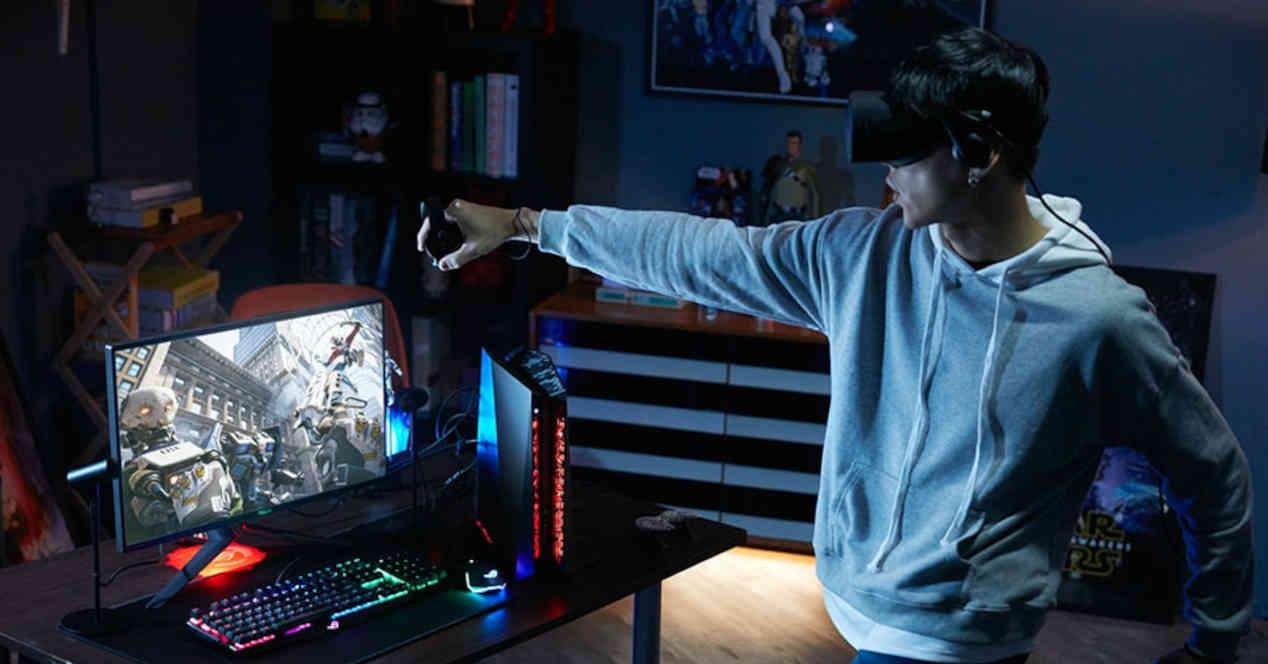Virtual reality is more than placing a screen glued to your eyes, it is a medium in itself with different rules which therefore require different specifications. Not everyone can use virtual reality glasses and since they are not cheap, you need to be very careful when purchasing them and have the necessary PC to use them.
The requirements of virtual reality
When we buy a monitor, there is a question of entry: the refresh rate or the resolution. On the other hand, with virtual reality this question does not exist. The reason for this is the feeling of presence which requires a time between making a movement and seeing it on the screen of less than 20 milliseconds, this means that the PC has to render the scene at high frequency to achieve this feeling.
The other point is the resolution, having the screen close to the eyes, the pixel density must be very high so that the image does not appear grainy due to the short distance between the pixels. The conclusion to all of this is simple, virtual reality requires not only very fast images but also very high resolutions.
This makes the visual quality, measured as GPU per pixel operations, in VR not as good as in the AAA games we see on PCs and consoles. What makes this a technology that, more than being told, must be experienced.
How to optimize the PC for virtual reality?
There are two tools that help us measure whether our PC is up to VR. The first is the SteamVR performance test, a tool that you can find on Steam that will run a series of performance tests on your PC that will tell you whether your PC is ready to be used for VR or not, in addition to telling you where your PC is weak.
The second tool is instead VRMark, a paid benchmark that offers three different performance tests. The first is Orange Room which will help you measure whether your PC is designed for the first editions of the HTC Vive and the Oculus Rift. It’s a somewhat outdated benchmark, but it’s the one that’s included in the free version of it. If you pay $ 20, they get access to the Cyan Room, which is used to measure VR in DX12 games and apps. The third instead is the Blue Room which renders beyond 4K, at 5120 × 2880 pixels.
On the other hand, keep in mind that, as in all PC applications, the requirements increase over time, so if you want to use a very advanced game or application, we recommend that you follow the recommended requirements. Your PC should overcome them if you want to use this app or game without problems. In the event that your PC does not pass the tests, then it will be necessary to optimize it for virtual reality, in the form of the corresponding hardware updates.
The HDMI of your graphics card is also important
First, make sure your graphics card has multiple HDMI or DisplayPort outputs, depending on which interface the VR headset is going to use. Since you won’t want to be disconnecting the video cable from the monitor to the HMD and from the HMD to the monitor all the time. The other reason is that there are VR experiences that are meant to be experienced by more people, so they need to see the action on an external screen.
Another point to consider is the HDMI or DisplayPort version supported by your graphics card, this is important because virtual reality, because it requires high resolution and high refresh rate, requires high bandwidth between the PC and the virtual reality headset. The more advanced versions of HDMI and DisplayPort are therefore recommended. Of course, there are graphics cards that unfortunately have lower bandwidth with their video interface than expected, for normal use this is not a problem, but it ends up being for virtual reality.
We don’t need to tell you that the old HDMI cables you stored there had better not use them, in any case don’t worry, as the HMD unit will come with the correct video cable. Our recommendation is never to change it and to use this cable exclusively for the virtual reality headset.
Use optimization tools to prepare your PC for virtual reality
The last point when preparing your PC for virtual reality is the game optimization and profiling tools. We have the case of GeForce Now by NVIDIA and Gaming Evolved by AMD, both apps will tell us not only if our material is ready for virtual reality, but will also allow us to load the profiles of the games for that which will best suit our material.
As in conventional games, it is important that you change some settings of the games, for example if you are using SteamVR you can adjust the output resolution and the refresh rate if you see that your system is having performance issues. Let’s not forget that the key to virtual reality is to have a real sense of presence and that sometimes it is necessary to reduce to achieve this.
In case you are using a laptop, you need to change the PC power plan settings as these are the ones that can prevent it from running at the proper speed. Try to change them before doing the tests to see if the hardware is compatible. In case you have a desktop computer, see virtual reality as an excuse to improve the cooling and power of your system, to keep the hardware at peak performance for as long as possible.
Table of Contents












